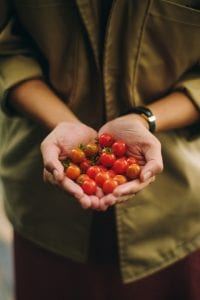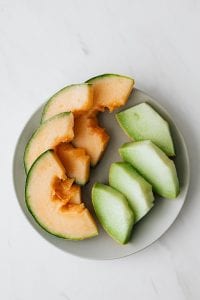Bid farewell to cold winter months and say hi to the sun and warmth of spring. Now is the ideal time to get in the garden and begin planting. However, what do you plant? Bargain Dumpsters spring planting guide has the appropriate answers for you this spring.
With the climate getting warmer, spring is the ideal opportunity to begin planting herbs, fruit trees, and vegetables. However, what you can grow likewise relies upon the soil conditions and environment where you reside. With a climate as diverse as America’s, it’s imperative to know which plants are most appropriate to your region, so you get the best outcomes in your garden. In this series, we will highlight and discuss the best crops you should plant this spring.
Prepare your soil
Before you plant, prepare your soil by digging in manure and compost, so your plants have the supplements they need to grow. Additionally, ensure the soil is all around watered. Then cover your garden beds in a 10cm layer of mulch to help hold the dampness.
Lettuce
Some verdant green is an unquestionable requirement in every vegetable garden. Growing a range of loose-leaf lettuce with a selection of leaf shapes and colors makes for a fascinating plate of mixed greens. Customary Iceberg lettuce can likewise be rewarding to grow. Plant some lettuce as seed or seedling at regular intervals, so there is always some to harvest and grow.
Carrot
These vegetables are modest to purchase. However, there is a unique thrill when pulling up your own carrots. Carrots developed best from seed planted into the veggie patch and kept clammy until the little seedlings grow. Experienced gardeners place a board over newly planted carrots to help them sprouting without drying out—carrots like free-draining, deep soil. Do not add extra organic matter, such as fertilizer or compost, as this can prompt forking. Slim out the column of seedlings to abstain from congestion.
Raspberries
These antioxidant stuffed berries are ideal for a fruit salad in summer. They can be planted in the summer; however, early spring yields the best-tasting crops. The berries are inclined to root rot, so they do best in a raised bed with rich soil that channels well. Fertilizer or manure will assist the fruit really flourish.
Kale
Frequently called a superfood for its nutritional punch, kale is an extraordinary early spring vegetable to plant. It isn’t the least bit disturbed by spring’s cold temperatures and would create consumable leaves just a month after planting.
To grow kale as a spring vegetable, sow seeds straightforwardly into the garden immediately. The soil temperature reaches 40 degrees F. Cover the seeds one-half inches deep and space them an inch apart. Except if you intend to gather just the baby greens, thin the seedlings to six to eight inches separated.
Kale leaves can be consumed raw in salads or cooked in soups. Try some fun-colored or frilly-leaved assortments to bring a unique touch of color and texture to the kitchen.
Tomatoes
Tomatoes are regularly the primary plant a new veggie gardener hopes for. Its little miracle – with a wide range of different varieties available, the lawn can deliver a buffet of color, size, and flavor. Tomatoes should be consistently watered and shielded from late frosts in spring just as hot spells.
Tomatoes are sun-worshipers and do best in warm soil, so it’s ideal for planting them in late spring. Add lots of manure and compost to the soil so that the tomatoes get enough supplements. The plants equally need lots of developing room, so place the seeds evenly separated.
Potatoes
Potatoes are a good plant that can endure a frost or two, which implies they can be planted right toward the start of spring. Ensure the earth is somewhat acidic and free—firmly compacted soil prompts deformed potatoes. To plant, cut up a potato and plant the pieces, eye side up, four inches down. When the stems of the plants reach eight inches, begin to cover the bottoms with additional soil. Sunlight makes the potatoes green and unpleasant tasting, so it’s ideal for keeping them all well covered.
Peppers
Peppers are somewhat trickier to develop if you don’t live in a warm environment. To make them work in colder climates, most landscapers will begin by growing the seeds inside and transplant them following 8 to 10 weeks. Start by placing the seeds in a warm, wet paper towel inside a plastic pack. When the seeds sprout, they can be moved to a pea pot and finally into the ground. Peppers shouldn’t plant them outside until the short-term temperature is 55°F at the lowest.
Beets
Beets are an extraordinary choice for early spring. The plants do well just after the last frost when the ground is cold, however not frozen—they don’t develop as well if it’s excessively hot. Beets do not need a lot of space so that they can be grown in pots. If you choose to plant them in the ground, utilize a garden tiller to ensure the soil is free and without rock. Soak the beet seeds in warm water to mollify the shells before planting them half an inch in the ground. Spread the seeds out three inches separated. When the seedlings show up, ensure the soil is reliably damp by watering them regularly.
Honeydew
This amazing fruit is planted in the late months of spring when the earth is warm. Assemble planting slopes that are around three feet wide and level on top in well-spread rows. Add manure to your soil to assist your new plants developing (melons do well with compost). Then, add four to six seeds in each slope, pushing them an inch into the mounds.
Cucumbers
To enjoy fresh cucumbers throughout the mid-year, you need to plant them two weeks after winter. Cucumbers require a great deal of sunlight and fruitful soil to thrive, so pick a radiant spot and add heaps of fertilizer. Plant the seeds in columns that are six feet apart.
Start your spring garden today.
Follow Bargain Dumpster for more garden tips to elevate and educate yourself and your personal garden.



